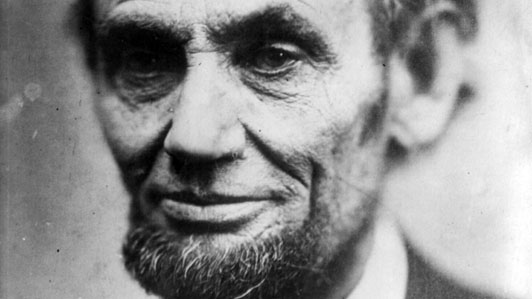Abraham Lincoln Did Not Invent Facebook, Winkelvoss Twins Unable to Sue
Educated Guess

A pretty adorable internet hoax has been debunked that concerns the real origins of Facebook and one of the country’s most popular presidents. After someone posted an anecdote about a visit to the Lincoln Museum in Springfield, Illinois, a rumor started spreading — and trending on Twitter — that Abraham Lincoln had invented a primitive, pre-digital version of Facebook. But alas, Aaron Sorkin does not have a potentially wonderful prequel to The Social Network to write, because this was proven to be fiction. No, Seth Grahame-Smith should take this one.
The troublemaker who started this rumor is Nate St. Pierre, who wrote an entry in his blog with the dubious-sounding title “Abraham Lincoln Filed a Patent for Facebook in 1845.” While looking into the career of circus master P.T. Barnum, St. Pierre found out that Barnum and Lincoln may have been acquaintances and wondered if there was any record of correspondences between the two. A researcher presented him with what he concluded was “the visual appendix to a patent application.”
Inside that application was a copy of an article from The Springfield Gazette (which did include a reference by Lincoln to Barnum, by the way), which basically recounted the events of the day as if Lincoln was intending for others to read about it. But it was the layout of the article that had St. Pierre drawing some comparisons to a very famous online time-waster:
The whole Springfield Gazette was one sheet of paper, and it was all about Lincoln. Only him. Other people only came into the document in conjunction with how he experienced life at that moment. If you look at the Gazette picture above, you can see his portrait in the upper left-hand corner. See how the column of text under him is cut off on the left side? … But just to the left of his picture, and above that column of text, is a little box. And in that box you see three things: his name, his address, and his profession (attorney).
The first column underneath his picture contains a bunch of short blurbs about what’s going on in his life at the moment – work he recently did, some books the family bought, and the new games his boys made up. In the next three columns he shares a quote he likes, two poems, and a short story about the Pilgrim Fathers. … In the last three columns he tells the story of his day at the circus and tiny little story about his current life on the prairie.
Put all that together on one page and tell me what it looks like to you. Profile picture. Personal information. Status updates. Copied and shared material. A few longer posts. Looks like something we see every day, doesn’t it?
At the bottom of the page was text concerning Lincoln’s apparent patent application — for The Spring Field Gazette, as a means of providing information about one’s everyday minutiae to others. Part of Lincoln’s proposition for the Gazette: “each Man may decide if he shall make his page Available to the entire Town, or only to those with whom he has established Family or Friendship.” The Gazette was intended to have its own version in every town. St. Pierre took this as a patent application, by Abraham Lincoln, for an early version of Facebook.
However, this entire story is fake — so says the Lincoln Museum, who said they don’t employ the researcher St. Pierre mentioned, nor did they remember St. Pierre coming in to request documents mentioning a correspondence between Lincoln and P.T. Barnum in the first place. In fact, they don’t remember St. Pierre at all.
They do, however, confirm that Lincoln remains the only president to hold a patent — for “a device to help riverboats that became stuck on sandbars.” Different century, different needs.
But imagine the possibilities for a third National Treasure movie, you guys.
(via UpRoxx)
Have a tip we should know? tips@themarysue.com